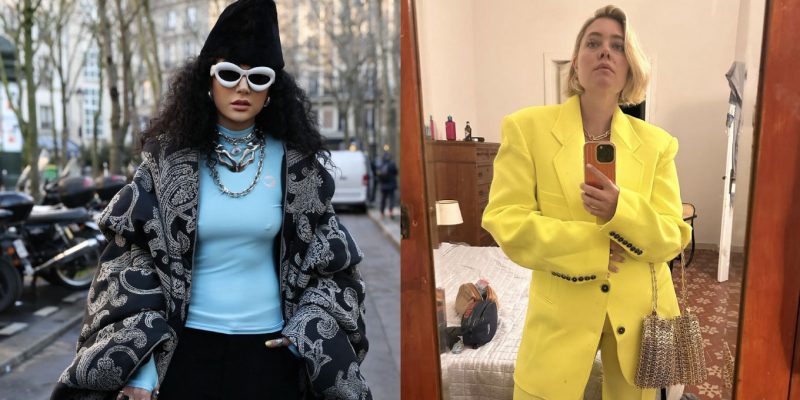Trends
Inside Fashion Revolution’s Goal to Transform the Industry for Good
“This isn’t just for people who are into fashion – it’s for anybody who wears clothes."
by : Erica Ngao- Apr 20th, 2020

Lindsey Catherine Photography
On April 24, 2013, Rana Plaza in Dhaka, Bangladesh, collapsed, killing at least 1,132 people and injuring more than 2,500 others working in the building’s five factories. One of the worst industrial accidents on record, the disaster exposed what millions of garment workers around the world face each day, including unsafe work environments and poor wages. For many in the industry, it was a catalyst for change, hence Fashion Revolution was born.
The non-profit movement, created by British designers Carry Somers and Orsola de Castro, has grown into a global network of makers and consumers working toward systemic change. From lobbying policy makers to partnering with organizations like the United Nations and Greenpeace, the largely-volunteer-run campaign aims to foster collaboration across the industry’s supply chain and shift the entrenched mindset around fashion’s traditional business model, material use and consumption.
View this post on InstagramA post shared by Fashion Revolution (@fash_rev) on
While Claire Theaker-Brown was touring factories in Shanghai for her B-Corp-certified accessories brand, she became frustrated by the idea that ethical fashion is synonymous with being made in North America. “When brands remove the pressure for high volumes on short turnaround times, you get beautiful workmanship and the opportunity to work with factories that are doing right by their workers,” she says. After moving back to her hometown of Edmonton, Theaker-Brown got more involved with the group and eventually took on the role of country coordinator to help regional teams from coast to coast effect local change. She has also been working with retailers and brands like Mountain Equipment Co-op and Kotn to create and act on sustainability pledges.
Held every year on the anniversary of the collapse, Fashion Revolution Week is a culmination of this advocacy. Hundreds of events like clothing swaps take place in different countries alongside the social-media-driven #WhoMadeMyClothes campaign, which encourages consumers to demand greater transparency from the industry. We spoke to Theaker-Brown about the importance of inclusivity, how governments can step up and being okay with getting it wrong.
What is the theme of Fashion Revolution Week this year?
“We’re encouraging local designers and sustainably minded businesses to host open houses and give people the chance to come in and ask questions. It can be really scary for brands to participate because they often feel like they don’t have all the answers, but we want them to really own the idea of progress over perfection.”
View this post on InstagramA post shared by Fashion Revolution (@fash_rev) on
Why should people participate?
“This isn’t just for people who are into fashion – it’s for anybody who wears clothes. [It’s important] to have a mix of events that include people from different socio-economic backgrounds and different age groups to make sure that we’re really driving change across our whole community. This [change] needs to be made by anyone who doesn’t go to work naked.”
What is a major barrier to making fashion more sustainable?
“It’s really important to acknowledge the role that governance has in effecting lasting environmental and social change where the textile industry is concerned. For me, the number one thing that we need to see in Canada is more civic textile-recycling programs and for it to be a lot harder to dispose of textiles, both for businesses and individuals. At the end of the day, those clothes don’t have to be wasted; they could be diverted to a million other places, including to people who need them.”
This article originally appeared in the April 2020 issue of ELLE Canada. Subscribe here or buy a digital copy of the issue here.
READ MORE:
3 Ways to Make Your Closet More Sustainable This Earth Day
Newsletter
Join our mailing list for the latest and biggest in fashion trends, beauty, culture and celebrity.
More from Trends
Read Next

Beauty
The Best Met Gala Beauty Looks Of All Time
From Taylor Swift's 'Bleachella' era to Rihanna's iconic 2011 braids, meet the best beauty moments in Met Gala history.
by : Katie Withington- Apr 26th, 2024

Culture
Benny Blanco Says He Fell in Love With Selena Gomez Without ‘Even Noticing’ It
Allow Benny Blanco to tell the straight-from-a-rom-com story of how he realized his feelings for his girlfriend and longtime friend.
by : Alyssa Bailey- Apr 26th, 2024

Beauty
Tested and Approved: Your New Hydrating Skincare BFF
This new product has all of your skin’s thirst-quenching needs covered.
by : ELLE Canada- Apr 17th, 2024




